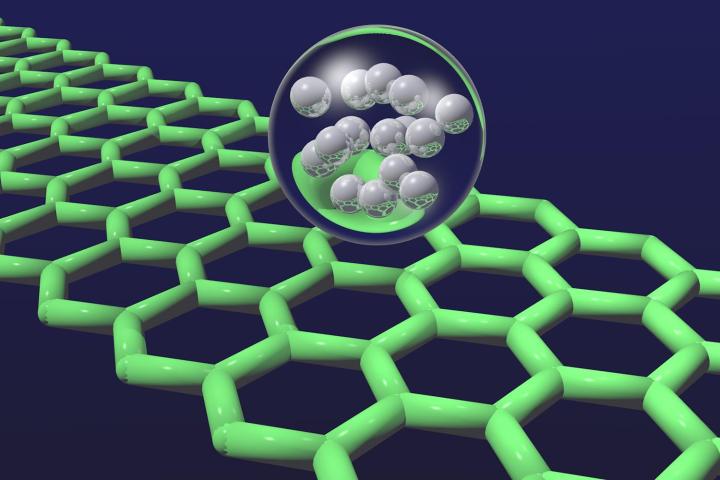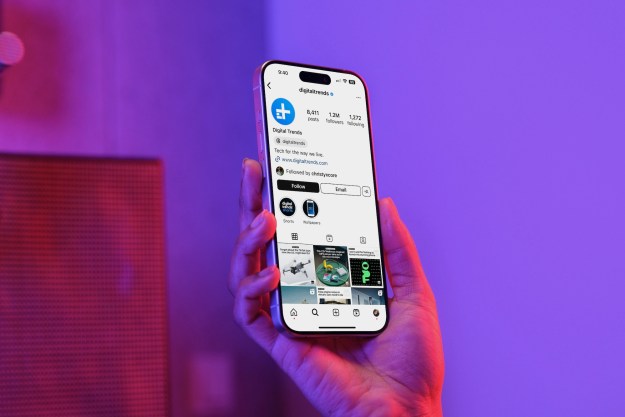
There are many, many projects worldwide investigating the potential of graphene for a wide variety of industries, but there are compelling reasons for mobile technology manufacturers in particular to sit up and take notice. Researchers from Samsung and Nokia were among the speakers at the recent Graphene Supply, Application & Commercialisation 2014 summit in Manchester, discussing the feasibility of mass production, the need for further investment, and potential applications ranging from flexible touch screens to transistors and semiconductors.
A brief history
Graphene has been on the horizon for decades. It was first studied at a theoretical level back in the late 1940s, but it wasn’t practically pursued until the 1970s. Millions of layers of graphene form graphite, which is used in pencils, but scientists couldn’t figure out how to isolate it.
It wasn’t until 2003 that Andre Geim and Kostya Novoselov, two Russian researchers working at the University of Manchester in the UK, figured out how to extract the material from graphite using Scotch tape. They published their research the following year and began to teach others how to make the material, which led to a 2010 Nobel Prize for Physics and an explosion in graphene research worldwide.

Since 2004 there has been a steady stream of papers exploring the strange properties of graphene. The creation of graphene flakes soon gave way to sheets, but there were size limitations to overcome and researchers had difficulty establishing a reliable production method that consistently produced high quality graphene.
As the scientific issues have gradually been solved, all that’s left between us and graphene-toting devices is the will and financial muscle to produce them and that depends upon killer applications.
Flexible, conductive, and unbreakable touchscreens
According to an article published by the American Chemical Society in 2012, “touch screens made with graphene as their conductive element could be printed on thin plastic instead of glass, so they would be light and flexible, which could make cell phones as thin as a piece of paper and foldable enough to slip into a pocket. Also, because of graphene’s incredible strength, these cell phones would be nearly unbreakable.”
Researchers at The University of Texas at Austin worked out how to grow larger sheets several centimeters wide in 2009. The method was adapted with even greater success by researchers at South Korean Sungkyunkwan University in Suwon who used copper sheets and a printing press to create a graphene sheet 30 inches in the diagonal. They also created the first graphene-based touchscreen panel. Samsung reportedly produced a 40-inch sheet in 2011, but according to Nikkei Technology, in 2012 Sony used the roll-to-roll method to make a sheet 23cm wide and 100 meters long.

Samsung’s Seungmin Cho led a session on flexible touchscreens at the recent summit in Manchester and the company has already filed numerous patents related to graphene, including a patent for a touch display device using graphene or carbon nanotubes. Carbon nanotubes are sheets of graphene rolled into cylinders.
The fact that it is conductive and transparent makes graphene a great candidate for touchscreens, but the reason it could replace the materials currently used, such as indium tin oxide (ITO), is because it’s stronger and more flexible. Shattered and cracked touchscreens could soon be confined to the past. The fact that ITO is rising in price as it becomes increasingly scarce is also worth considering.
Looking beyond that, graphene could also pave the way for new form factors in mobile and wearable devices, and even foldable touchscreens.
Fast-charging, flexible batteries
Battery size and capacity has long been a bugbear for consumers and manufacturers alike. Imagine you could charge your smartphone battery in 20 seconds and it would run all day. Imagine it could bend, be shaped, and integrate directly onto a chip. You may not have to imagine for long.
According to UCLA research graphene-based supercapacitors could be the answer. They can charge and discharge a hundred to a thousand times faster than standard batteries; they’re flexible and easily shaped; and they’re easy to produce.
“The process is straightforward, cost-effective and can be done at home,” Maher El-Kady of the California NanoSystems Insititute at UCLA explains “One only needs a DVD burner and graphite oxide dispersion in water, which is commercially available at a moderate cost.”
Graphene can also play an important role in making our current lithium-ion batteries longer lasting and faster charging. According to research at Northwestern University sandwiching silicon between sheets of graphene enables a new electrode that can charge 10 times faster and hold a charge that’s up to ten times greater. The trouble with silicon is that it deteriorates easily, but the graphene is far more flexible and can hold it together.
This could dramatically improve the performance of the batteries in our smartphones and enable much slimmer designs. It could also be a real boom for the expanding wearables market.
Better camera sensors and low-light photography
“We have shown that it is now possible to create cheap, sensitive and flexible photo sensors from graphene alone,” says Assistant Professor Wang Qijie, from Nanyang Technological University in Singapore.

His research has given birth to an image sensor made from graphene which is 1,000 times more sensitive to light than the current crop of compact camera imaging sensors, uses 10 times less energy, and will be cheaper to manufacture.
It’s more effective than traditional CMOS or CCD camera sensors because it’s able to trap electrons for longer, converting light into strong electric signals which can be used to create sharper and clearer images.
Better quality image sensors which are cheaper to produce and less power-hungry are obvious candidates for smartphones. Nokia applied for a patent in this area back in 2011.
Graphene transistors
As we reach the limits of what silicon can do, researchers are exploring new directions and graphene could deliver further miniaturization and greater speed for transistors. The problem is that it lacks an energy band-gap, which basically means that it can’t turn the flow of electricity off.

A number of smart minds are working on potential solutions. One paper from the University of California in Riverside suggests employing negative resistance. The University of Exeter put forth a paper on the Theory of doping graphene, which involves introducing impurities. There has also been research from the University of Manchester looking at introducing an insulating layer of boron nitride.
Faster Internet
Researchers from the universities of Bath and Exeter have suggested that graphene could deliver the Internet 100 times faster. The optical response rate of graphene is extremely high, almost 100 times faster than the optical switches currently in use. Employing graphene in our telecommunications infrastructure could deliver an important speed boost.
Better solar panels, and more
There are other applications that could conceivably impact on mobile technology. Research from MIT has highlighted graphene’s suitability for solar panels. It is excellent at absorbing sunlight, even when deployed in a very thin layer.
There is also lots of potential beyond mobile. According to a BBC report, the Bill and Melinda Gates Foundation paid $100,000 grant to help fund research into thinner and stronger condoms. It’s also being used in gas sensors, water desalination, the aerospace industry, bioengineering, the list goes on and on.
The National Graphene Institute is set to open in Manchester in 2015, at a cost of more than $100 million. It will serve as a center for graphene research and development hosting collaborations between scientists and commercial partners. We can expect great things from graphene in the next few years.

